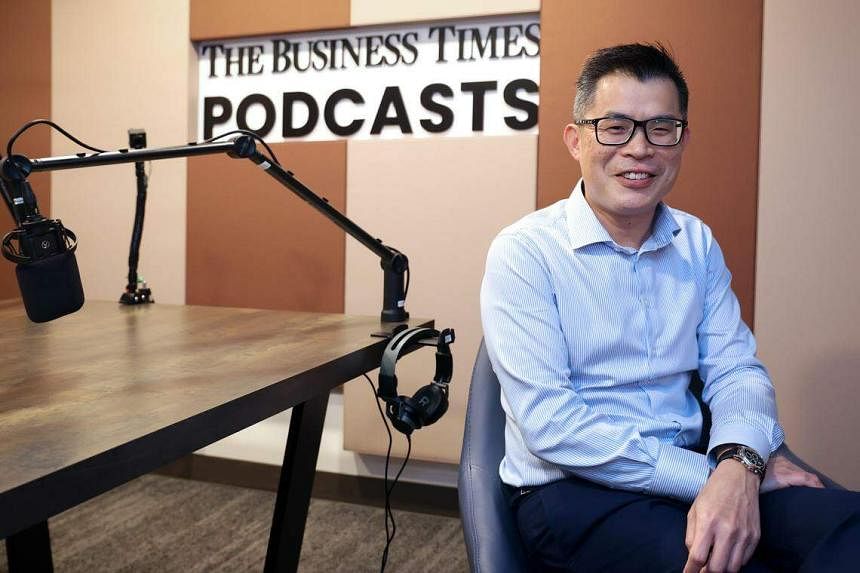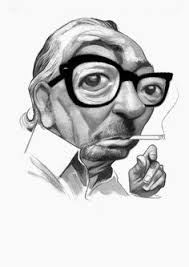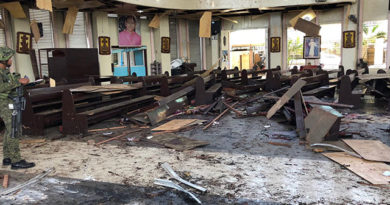MEDIA-JOURNO | BT podcast: ST editor Jaime Ho wants journalists to speak up, take collective ownership of newsroom


SINGAPORE – Jaime Ho, the new editor of The Straits Times (ST), is trying to transform a national institution once described as a “bowl of china” by the late prime minister Lee Kuan Yew. He spoke with The Business Times (BT) podcast editor Claressa Monteiro in the inaugural episode of Editors Talk, a new podcast series, on his leadership style, talent management, government-media relations and why the ST newsroom has to change. Below is an edited transcript.
Claressa Monteiro: What have you been doing in the five months since you took on the job?
Jaime Ho: I started with getting to know the newsroom and letting the newsroom get to know me. It is not often that you get someone from the outside of ST to lead it. Even now, my days are non-stop meetings, talking to people and understanding how they work.
I hope at the very least I bring a fresh pair of eyes to make changes. Not for the sake of changes – that’s the worst thing to do – but to really understand how the organisation, the newsroom, the culture has evolved, and then see how I can contribute to unleash the creativity and work ethic that already exists.
Monteiro: The ST newsroom has undergone a reorganisation. Could you tell us what your objectives are?
Ho: The larger perspective was to inject a little bit more efficiency, a little bit more integration, and a little bit more communication across teams.
I created a new team, ST Now, to reflect what’s happening on the ground. Not physically, perhaps, but online, on social media and elsewhere in the news ecosystem.
Another philosophy I have is that the newsroom must always evolve. The question is, how quickly we do it, how creative we can be and how we can raise our risk appetite in terms of initiatives, in terms of team structures, to be able to say: let’s try this out.
It is a large newsroom, it’s a newsroom that’s older than The New York Times, there are certain structures, certain cultures in place. But I think there’s a lot to work with.
Monteiro: Because of ST’s long, storied reputation, there’s a little reticence to be too risky, to change things too much. Where’s that balance?
Ho: I think people do have high expectations of what ST is in print. But that doesn’t mean that we can’t experiment. The question is how you bring everyone along – to understand that we are changing, we have to change. If done in the right spirit, and especially if done with the overriding ST editorial vision, I think some experimentation is always positive.
Monteiro: Some say the media, not just you, but any of the media institutions here, is the mouthpiece of the government. The government has their expectations, but we’ve got our integrity, and a duty to the public to inform. With all of these different relationships pulling at you, how do we help ensure that the media, and specifically ST, is a trusted and constructive institution in Singapore?
Ho: Singapore’s political culture and our society have evolved uniquely, in the sense of how big a role the government plays in the lives of Singaporeans. By default, the government features quite largely in the way we report the news. All you had to do was to have crows in Bishan, in Serangoon, and within 24 hours there was a government agency response. I don’t think that anywhere else in the world you expect the government to respond to something so municipal so quickly.
Multiply that across the country, across a range of issues, and you can understand how it is that, if you flip open the pages of ST, the government does feature quite significantly. Therefore, I can understand where people come from when they say, “Why is it when I look at ST there are all these government things?”, “Is it because you’re a mouthpiece? Why is it you’re always presenting the government perspective on things?”
The government is one of the largest newsmakers. Just as we deal with all sorts of newsmakers, we deal with them quite regularly, and that’s nothing to hide from. But that brings into play our larger and other editorial focuses. It shouldn’t all just be about government policies. And that’s something that I’ve tried to talk to the newsroom about – (doing) other stories that Singaporeans may find matter to their daily lives, that may not involve the government.
Monteiro: Leadership drives the culture in any organisation. Are you a lead-by-fear leader, or are you a my-door-is-always-open kind of leader?
Ho: My door is literally always open. In terms of culture, there are three things I hope any newsroom has: One, it has to be driven by purpose. Journalism is about purpose. I think all of us already have that. The question is how to make that front and centre. Two, I’d like the newsroom to make collective decisions. The vision is something we own as a whole, and we should stand by our decisions as a newsroom. The third piece of the puzzle is to further entrench and grow the spirit of openness and diversity – in being able to have alternative viewpoints. It’s incumbent on all of us to, as far as possible, let everyone have a voice.
If you put these three things together, you will get people who enjoy coming to work. If a newsroom enjoys what it does, it shows in each word printed on a piece of paper, online, or in a podcast. Over time, hopefully, our audience sees that this is a newsroom that takes pride in what it does.
Monteiro: One major pain point for many industries right now is talent acquisition and retention. Do we have a unique problem with this in the newsroom?
Ho: No, I don’t think we have a unique problem. This is a challenge that all organisations and teams grapple with: How do you create a culture that is visible and that people can feel from the outside as well as inside, that firstly attracts and then keeps them?
People are open enough, ecosystems are porous enough, that people know what your company is like. I look at it positively: If we do what’s right in terms of culture, we will be able to attract people.
In terms of how you retain, again, we need to look at things slightly differently. It’s incumbent on us to see how best we build upon the experiences in the workplace. And experiences don’t mean just promotions. Experiences mean opportunities to grow, exposure, doing different things, if not overseas, then within the organisation, different parts of the team. Journalism is the perfect place to provide people the different experiences they want.
Monteiro: And is it still a meaningful career option?
Ho: Of course it is. The question is: How do we keep the values of journalism? Someone needs to do it. It’s a public good, but it is not something that you can take for granted will always be provided by someone else. There is a public purpose to it. THE BUSINESS TIMES
.
 Ads by: Memento Maxima Digital Marketing
Ads by: Memento Maxima Digital Marketing
@[email protected]
SPACE RESERVE FOR ADVERTISTMENT


 Memento Maxima Digital Marketing
Memento Maxima Digital Marketing






